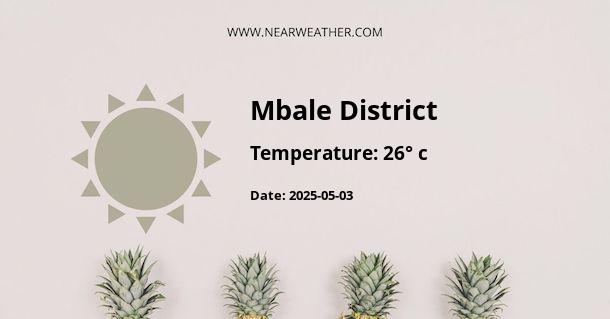Mbale District, Uganda: Climate and Weather Year Round
Mbale District is located in the Eastern Region of Uganda, and it is known for its beautiful landscapes, rich cultural heritage, and diverse climate. The district experiences a tropical climate, characterized by distinct wet and dry seasons throughout the year. Understanding the climate and weather patterns in Mbale can be helpful for residents, tourists, and agricultural activities in the area. In this article, we will explore the climate and weather conditions in Mbale District year round.
Temperature
The temperature in Mbale varies throughout the year, with relatively stable temperatures due to its elevation. The district is situated on the slopes of Mount Elgon, which has a significant impact on its climate. The average annual temperature in Mbale ranges from 17°C (63°F) to 26°C (79°F).
The warmest months in Mbale are January and February, with average temperatures reaching around 26°C (79°F). The coolest months are July and August, with average temperatures dropping to around 17°C (63°F). The temperature variation between day and night is also notable, with daytime temperatures often being higher than nighttime temperatures.
It is important to note that temperatures can vary depending on the specific location within Mbale District. Higher elevations, such as those closer to Mount Elgon, tend to be cooler compared to lower-lying areas.
Rainfall
Mbale District experiences two distinct rainy seasons and two dry seasons throughout the year. The primary rainy seasons occur from March to May and from September to November. These months receive the highest amount of rainfall, with an average annual precipitation of around 1,200mm (47 inches).
The wettest months in Mbale are April and May, with heavy rainfall often accompanied by thunderstorms. During these months, it is common to experience prolonged periods of rain, which can sometimes lead to minor flooding in low-lying areas.
The dry seasons in Mbale occur from June to August and from December to February. These months have significantly lower rainfall, with average precipitation ranging from 30mm (1 inch) to 80mm (3 inches) per month.
Humidity
Mbale District has a relatively high humidity level throughout the year, primarily due to its proximity to Lake Victoria and the surrounding wetlands. The humidity levels range from 60% to 80%, with higher levels during the rainy seasons.
The high humidity in Mbale can make the temperatures feel hotter than they actually are, especially during the wetter months. It is important to stay hydrated and take necessary precautions to avoid heat-related illnesses when visiting or residing in the area.
Wind
The wind patterns in Mbale District are influenced by its geographical location and surrounding topography. The prevailing winds in the area come from the northeast, known as the "northeasterly winds." These winds bring moisture from the Indian Ocean, contributing to the rainfall during the rainy seasons.
During the dry seasons, the winds tend to be lighter and less pronounced. It is important to note that wind speeds can vary depending on the specific location within Mbale District, with higher elevations experiencing stronger winds compared to lower-lying areas.
Climate-Related Activities
The climate and weather conditions in Mbale District play a significant role in various activities, including agriculture and tourism.
Agriculture is a vital sector in Mbale, with farmers relying on the rainfall patterns to plan their planting and harvesting seasons. The wet seasons provide optimal conditions for crop growth, while the dry seasons allow for proper drying and storage of harvested crops.
Tourism in Mbale is also influenced by the climate, as visitors are attracted to the district's natural beauty and outdoor activities. The cooler temperatures during the dry seasons make it an ideal time for hiking and exploring the scenic trails of Mount Elgon. The wet seasons, on the other hand, offer lush green landscapes and the opportunity to witness the stunning waterfalls and rivers at their fullest.
Conclusion
Mbale District in Uganda experiences a tropical climate with distinct wet and dry seasons. The average annual temperature ranges from 17°C (63°F) to 26°C (79°F), with the warmest months being January and February. The district receives the highest amount of rainfall from March to May and from September to November, with April and May being the wettest months. The humidity levels range from 60% to 80%, and the prevailing winds come from the northeast. Understanding the climate and weather patterns in Mbale is essential for residents, tourists, and agricultural activities in the area.
A - Mbale District's Latitude is 1.080000 & Longitude is 34.180000.
A - Weather in Mbale District is 23° today.
A - Climate Conditions in Mbale District shows overcast clouds today.
A - Humidity in Mbale District is 49% today.
A - Wind speed in Mbale District is 1.66 km/h, flowing at 266° wind direction. today.
